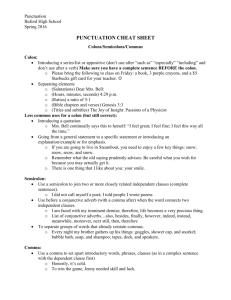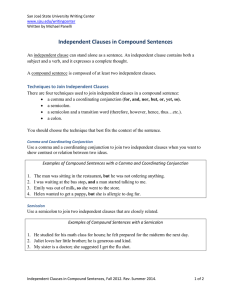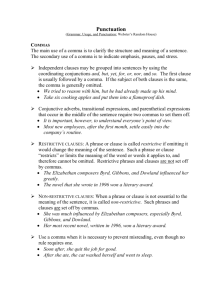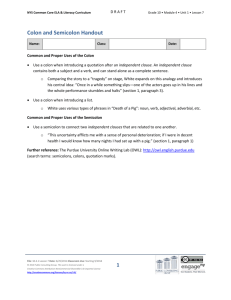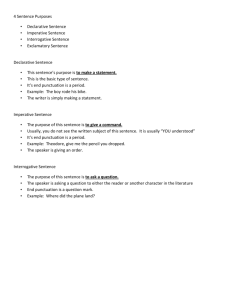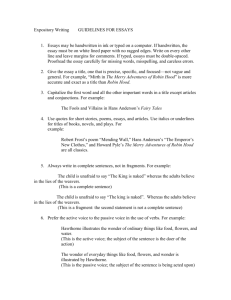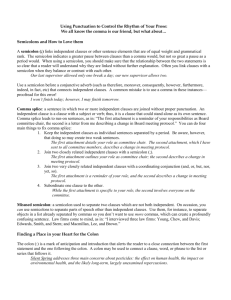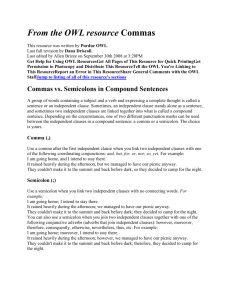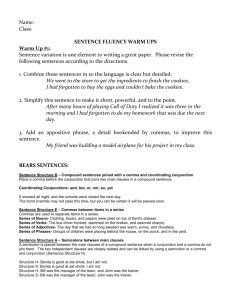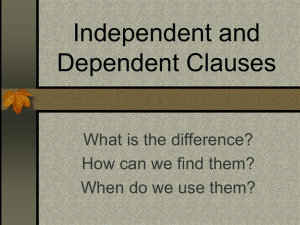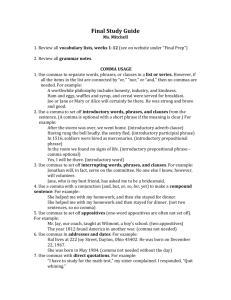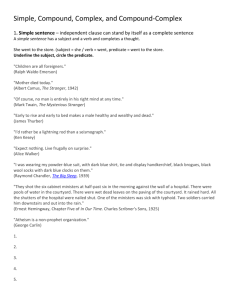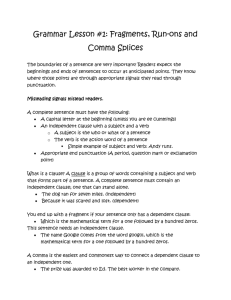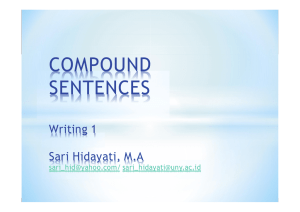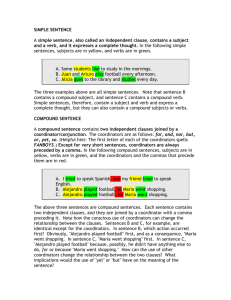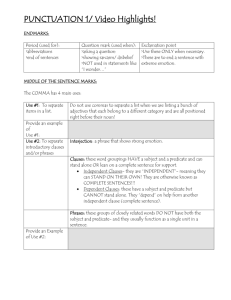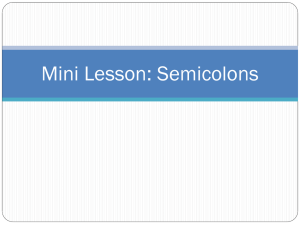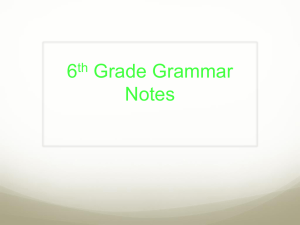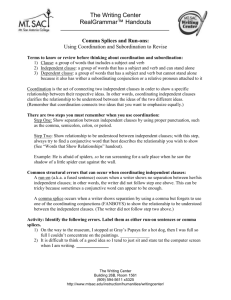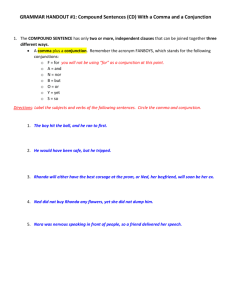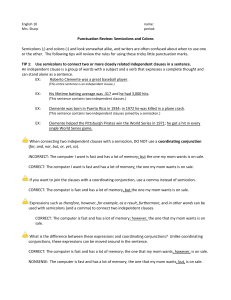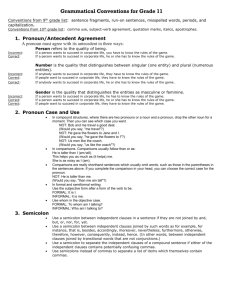compound sentence
advertisement
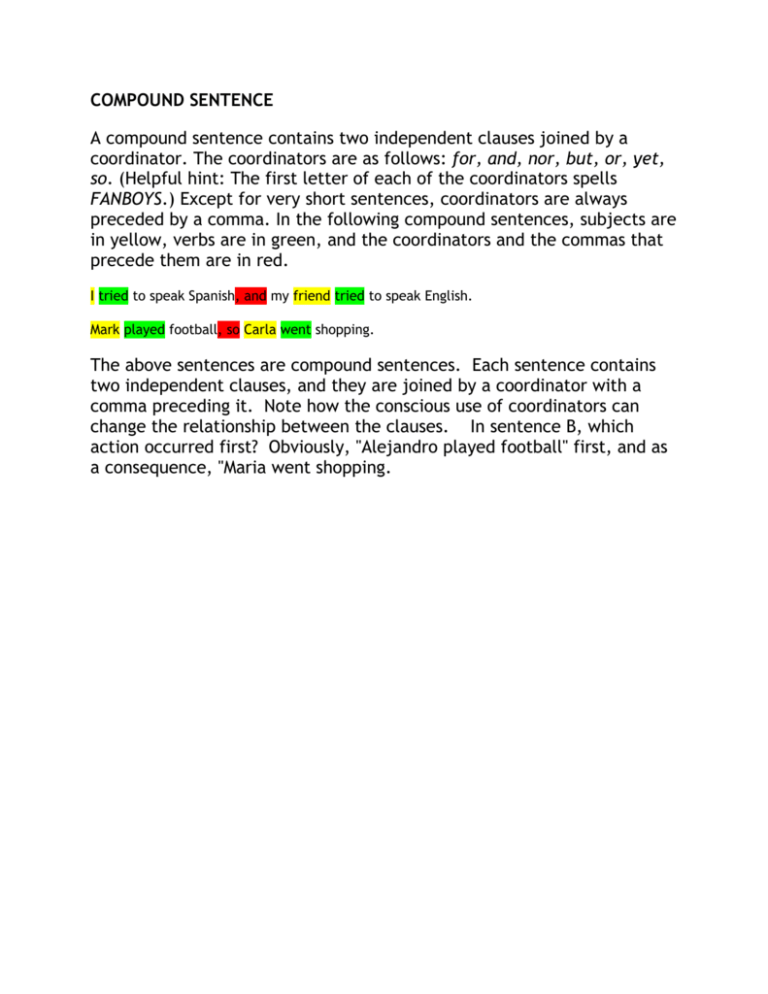
COMPOUND SENTENCE A compound sentence contains two independent clauses joined by a coordinator. The coordinators are as follows: for, and, nor, but, or, yet, so. (Helpful hint: The first letter of each of the coordinators spells FANBOYS.) Except for very short sentences, coordinators are always preceded by a comma. In the following compound sentences, subjects are in yellow, verbs are in green, and the coordinators and the commas that precede them are in red. I tried to speak Spanish, and my friend tried to speak English. Mark played football, so Carla went shopping. The above sentences are compound sentences. Each sentence contains two independent clauses, and they are joined by a coordinator with a comma preceding it. Note how the conscious use of coordinators can change the relationship between the clauses. In sentence B, which action occurred first? Obviously, "Alejandro played football" first, and as a consequence, "Maria went shopping. COLON: The colon is used: a) To introduce a list. Example: You will have to order several accessory components: chargers, cases, cords, cables, and speakers. b) To introduce an extract or quotation that follows an introductory sentence. Example: As Author, Erica Jong, stated: “If you don’t risk anything, you risk even more.” c) In the salutation of a formal business letter. Example: Dear Sir: Dear Madam: d) Between figures denoting hours and minutes, with exception to the 24-hour clock system. Examples: 4:30 A.M. 6:20 p.m. 1820 hrs. e) To precede an extended explanation. Example: There are two conditions that must exist before we can experience true freedom: first, each person must be entitled to act independently of the other; second, each must agree not cross those parameters that have been set in place as protection from harm. f) To precede a restatement of an idea. Example: The play was poorly performed: it lacked both experience and characterization from the actors. SEMICOLON: While the comma is frequently used, the following are the general accepted rules for the use of the semicolon. a) To separate two independent thoughts in a sentence that otherwise would have been separated by using a conjunction such as and or but. Example: It was the first of April; all the spring lines were on display. * A comma separating these thoughts would not provide a distinct enough pause. b) To precede the words “for example,” “for instance,” “as in,” etc. in sentences. Example: The course will include role-playing which demonstrates the practical application for anger management skills learned; for example, a boss employee conflict, a spousal argument, and a situation of a misbehaved child with a parent. c) To separate items in a long list, especially when commas have already been used. Example: Please place the following orders with the restaurant for our breakfast meeting: two boiled eggs, sausages, toast, and coffee; eggs benedict with a side order of hash browns, tea and orange juice; and two pancakes with one egg cooked over easy and coffee. Use a semicolon when you link two independent clauses with no connecting words. For example: I am going home; I intend to stay there. It rained heavily during the afternoon; we managed to have our picnic anyway. They couldn't make it to the summit and back before dark; they decided to camp for the night. You can also use a semicolon when you join two independent clauses together with one of the following conjunctive adverbs (adverbs that join independent clauses): however, moreover, therefore, consequently, otherwise, nevertheless, thus, etc. For example: I am going home; moreover, I intend to stay there. It rained heavily during the afternoon; however, we managed to have our picnic anyway. They couldn't make it to the summit and back before dark; therefore, they decided to camp for the night. Colon Use a colon to join 2 independent clauses when you wish to emphasize the second clause. Road construction in Dallas has hindered travel around town: parts of Main, Fifth, and West Street are closed during the construction. Use a colon after an independent clause when it is followed by a list, a quotation, appositive, or other idea directly related to the independent clause. Julie went to the store for some groceries: milk, bread, coffee, and cheese. In his Gettysburg Address, Abraham Lincoln urges Americans to rededicate themselves to the unfinished work of the deceased soldiers: "It is for us the living rather to be dedicated here to the unfinished work which they who fought here have thus far so nobly advanced. It is rather for us to be here dedicated to the great task remaining before us — that from these honored dead we take increased devotion to that cause for which they gave the last full measure of devotion — that we here highly resolve that these dead shall not have died in vain, that this nation under God shall have a new birth of freedom, and that government of the people, by the people, for the people shall not perish from the earth." I know the perfect job for her: a politician. Use a colon at the end of a business letter greeting. To Whom It May Concern:
